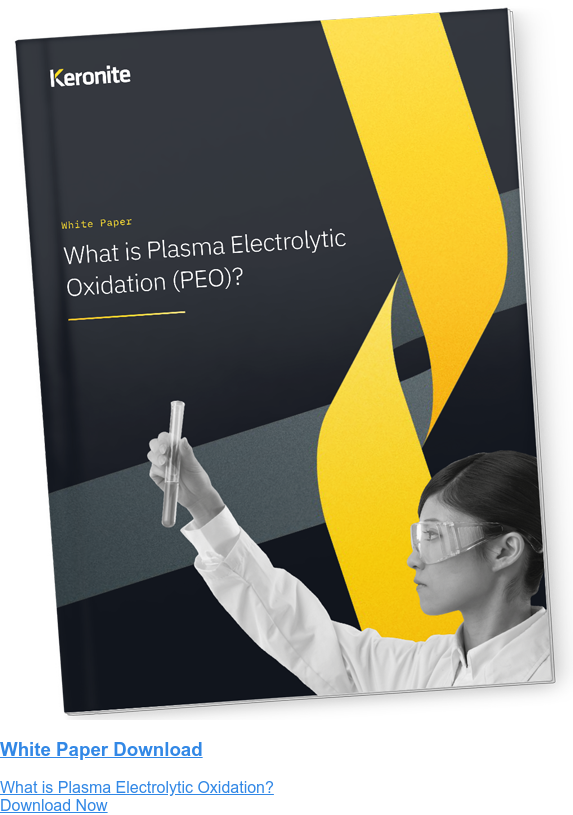New research: PEO treated titanium substrates optimises photocatalytic performance
26 April 2021New research shows that Plasma Electrolytic Oxidation (PEO) technology improves the performance of photocatalytic titanium surfaces when removing pollutants from water in industrial environments.
Improving the efficiency of Photo-catalytic Water Treatment (PWT), an overall more effective water treatment technology than basic UV photolysis, enables faster flow rates and lower UV intensities, introducing potential process efficiencies.
The research paper: ‘Optimization of the microstructure of TiO2 photocatalytic surfaces created by Plasma Electrolytic Oxidation of titanium substrates’, reports the beneficial effects of producing photocatalytic TiO2 via PEO of titanium, with a specific focus on how intermediate processing times, produce the most favourable photocatalytic surface.
The research team included scientists from the University of Cambridge’s Department of Materials Science & Metallurgy, Plastometrex Ltd., ATG UV Technology and the company behind the PEO solution, Keronite International.
What are photocatalysts and how are they used?
In the same way a catalyst facilitates and accelerates a chemical reaction without being part of that reaction, a photocatalyst performs the same role for photoreactions. A photoreaction is a chemical reaction which uses visible, ultraviolet or infrared light to power the chemical change.
Titanium dioxide is a photocatalyst commonly used for the treatment of polluted water and air, using energy from a light source to produce oxygen free radicals from moisture in the atmosphere, or hydroxyl radicals in water purification applications. These oxygen free radicals and hydroxyl radicals are capable of killing up to 99% of microorganisms and removing potentially dangerous organic pollutants.
Whilst TiO2 is a highly effective photocatalyst, there are several disadvantages that limit its use in some applications. Most notably, it is activated by ultraviolet light, which represents only 5% of the available energy in sunlight and the process of breaking down organic pollutants is a surface reaction therefore a high surface area is required to enable a high rate of photocatalytic activity. It has also been proven that a rough surface disrupts how water is distributed over the photocatalytic surface, further improving the absorption of molecules into the structure of the TiO2.
Research methodology
Treating titanium with PEO technology results in a highly porous outer layers of the resulting TiO2 coatings that are formed from the metallic substrate. This research used high-speed photography to study the characteristics of the electrical discharges that are central to the PEO process, correlating the results with the microstructure of the resulting coating.
The photocatalytic performance was then evaluated under UV-C illumination using urea as a model pollutant. Modelling of liquid flow over the PEO surfaces was performed using COMSOL.
Research findings
The experiments described in this new paper were to study the relationship between PEO processing conditions, discharge characteristics and the resultant microstructure on titanium substrates. It identified that photocatalytic activity was enhanced on samples with high surface roughness and high surface area. These conditions were produced after intermediate processing times of around eight minutes. Longer processing times resulted in the valleys between the large protuberance being filled by more discharge cascades, leading to a reduced surface roughness, and reduced catalytic performance.
The researchers concluded that fluid flow was adequately disrupted in the samples with the rough surfaces, reducing the thickness of the hydrodynamic boundary layer and increasing the interaction between the model pollutant and the PEO treated catalytic surface.
This is positive news for industrial applications using titanium dioxide photocatalysts. Using PEO to improve the performance of TiO2 will enable industry to better manage unwanted organic compounds in process water. Improvements that will translate to cost and time savings plus improved health and safety parameters.
Using PEO to improve photocatalysis
Coatings created by PEO are highly porous, giving them the very high surface area that is critical for greater efficiencies in photocatalytic activity.
To further enhance photocatalytic activity via the use of PEO, material scientists at Keronite have discovered that it is possible to incorporate nanoparticles of materials such as Ag within PEO coatings. This has the benefit of expanding the spectrum of light that activates photocatalysis, to create more functional coatings that elicits wide-spectrum and high-activity photocatalytic behaviour.
The benefits of PEO for photocatalysis include:
- High porosity of >30% at a range of scales
- Controlled thickness between 5 and 50µm
- Resistant to mechanical, UV and chemical damage
- Enhanced corrosion resistance
- Ability to incorporate other active materials directly from the electrolyte bath and further customise surface coating properties and performance
- Membrane-like structure
This latest research has confirmed that PEO is a promising technology for enhancing photocatalysis for industrial water applications. To learn more about PEO, download our whitepaper ‘What is Plasma Electrolytic Oxidation, or get in touch with one of our materials scientists today.

 Keronite is now part of the CWST engineered coatings business.
Keronite is now part of the CWST engineered coatings business.